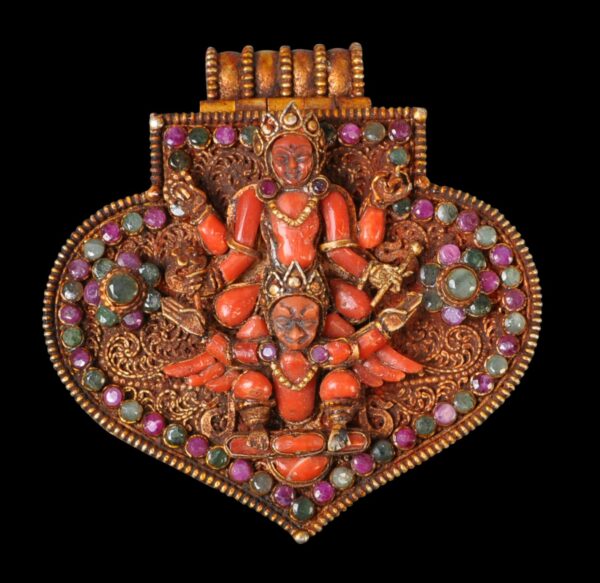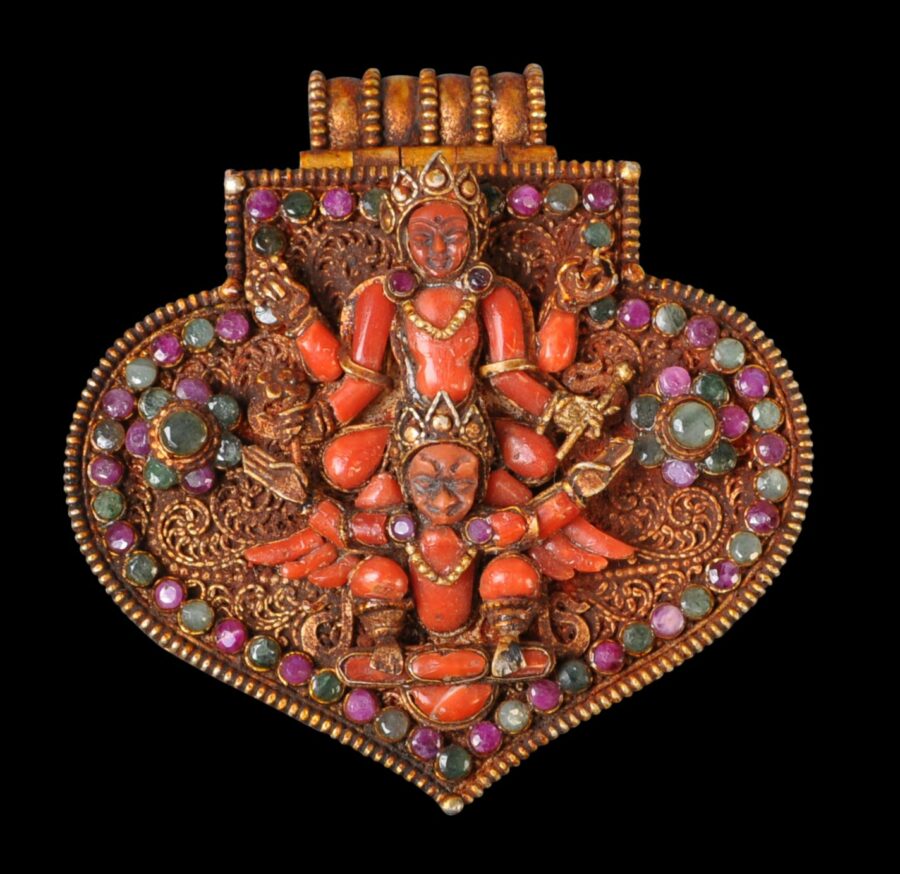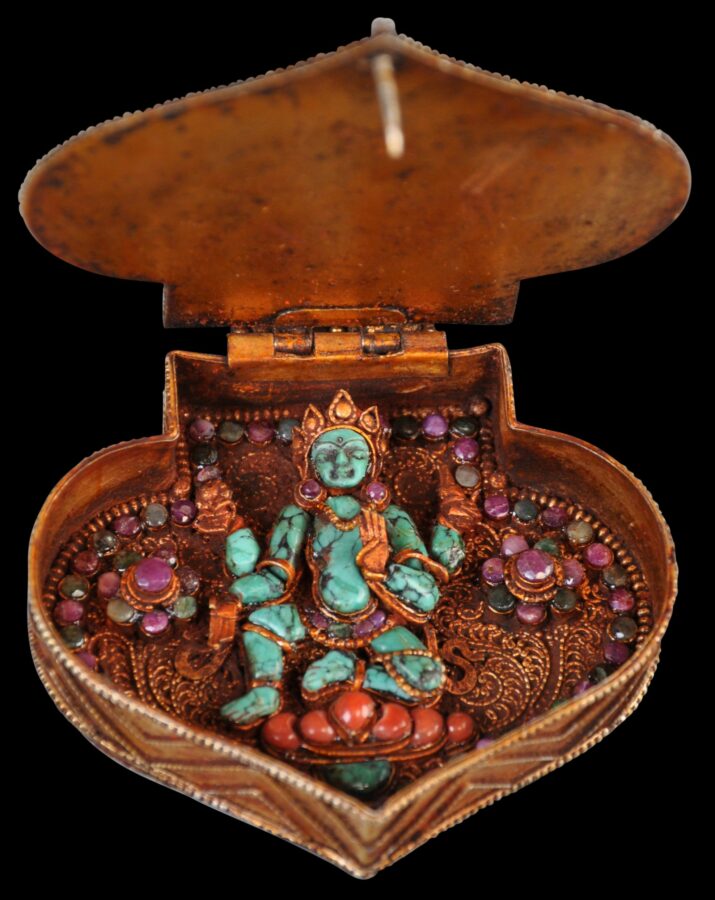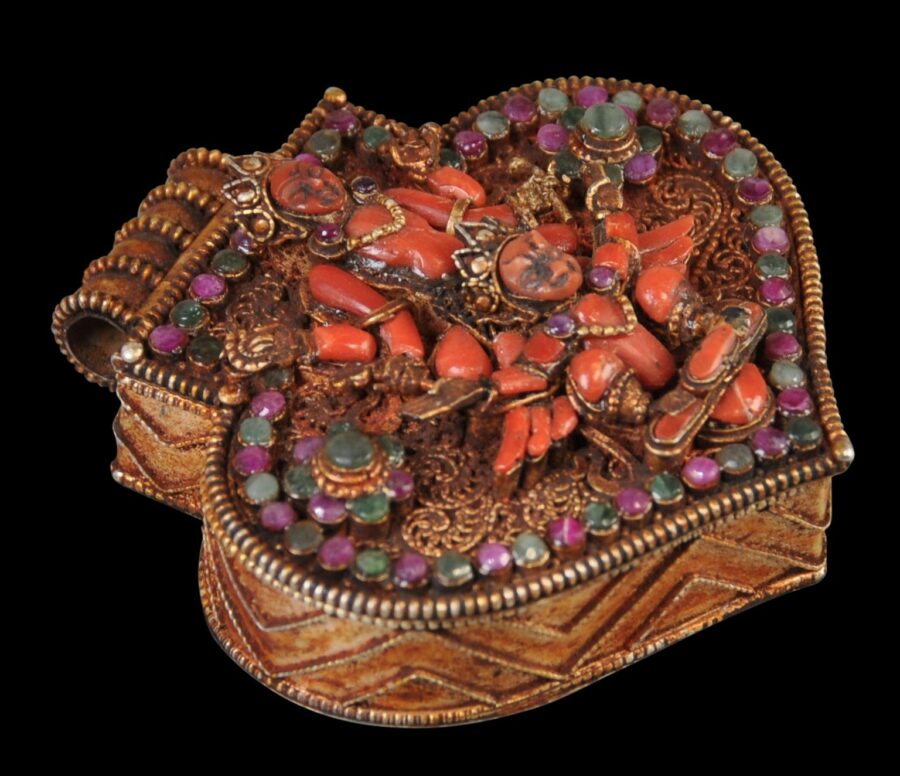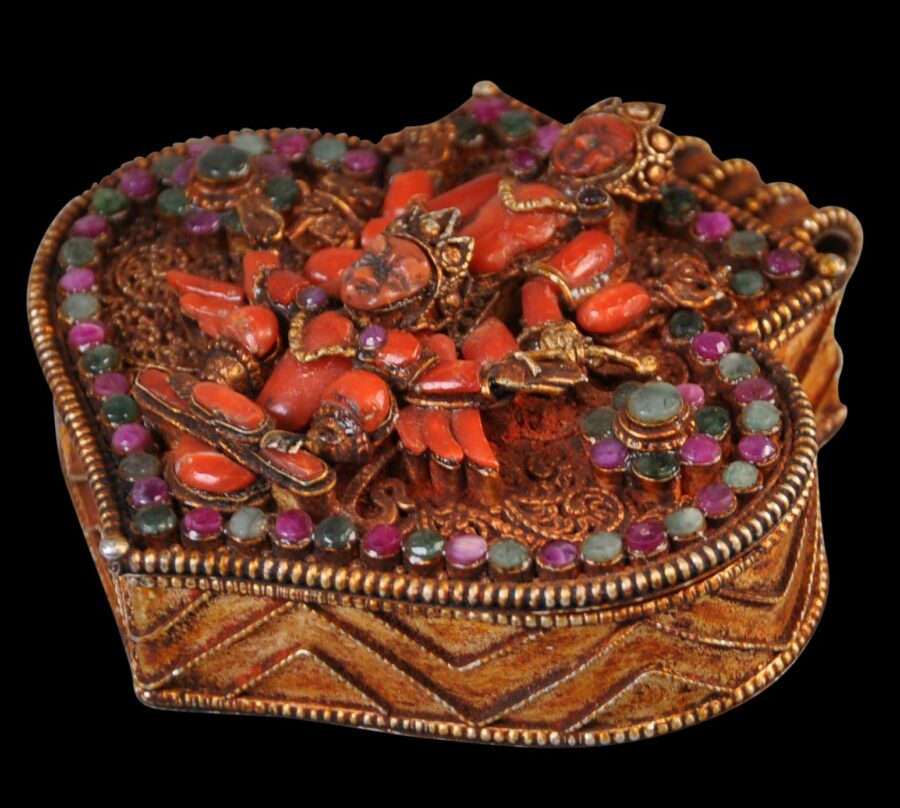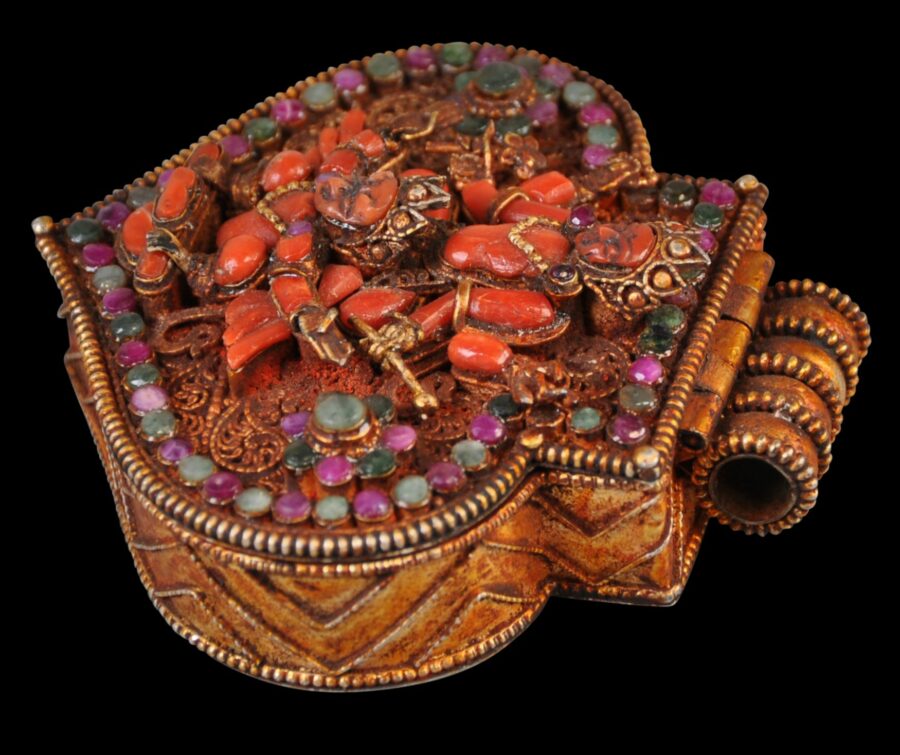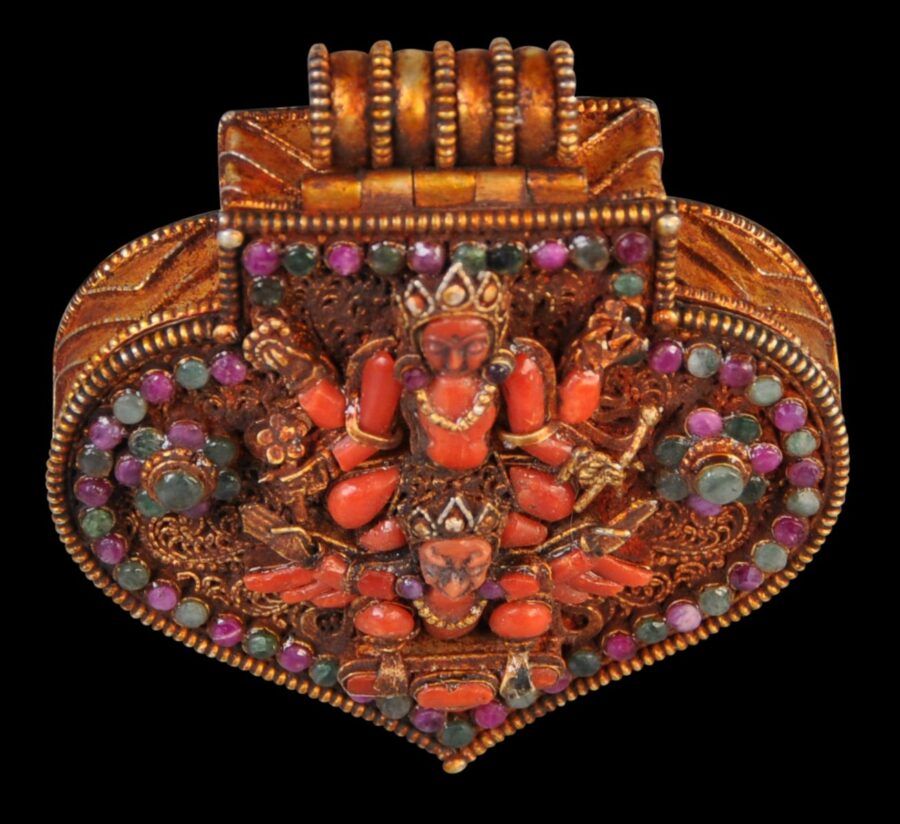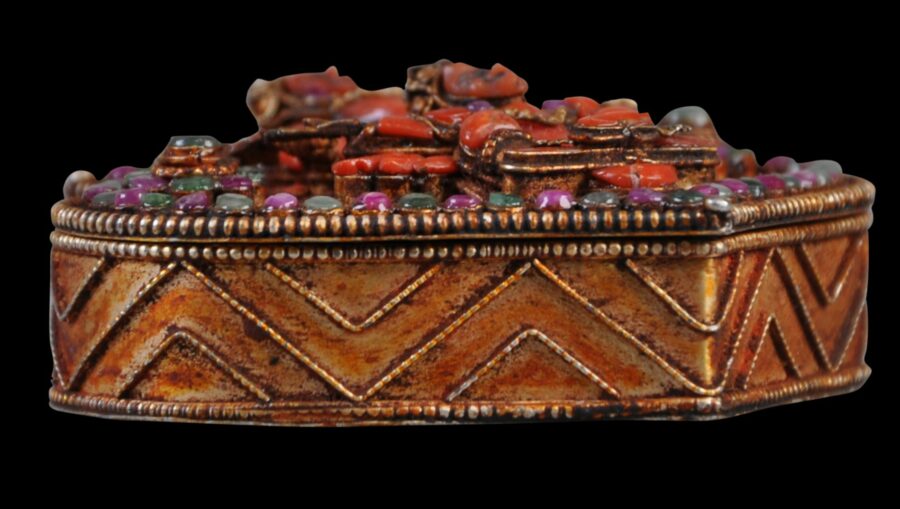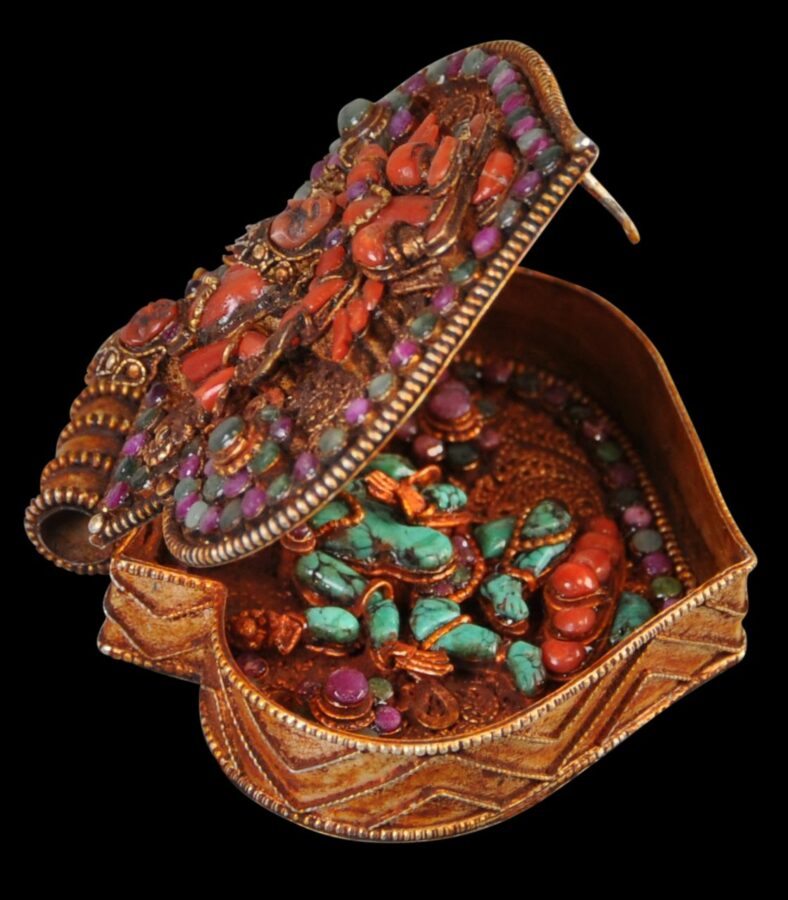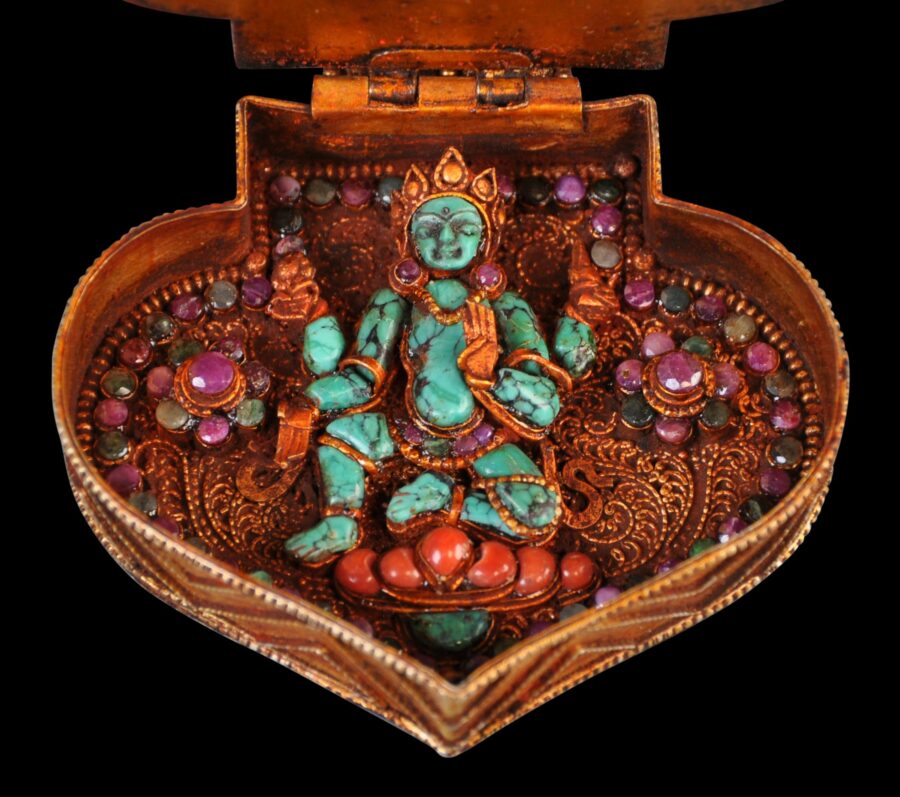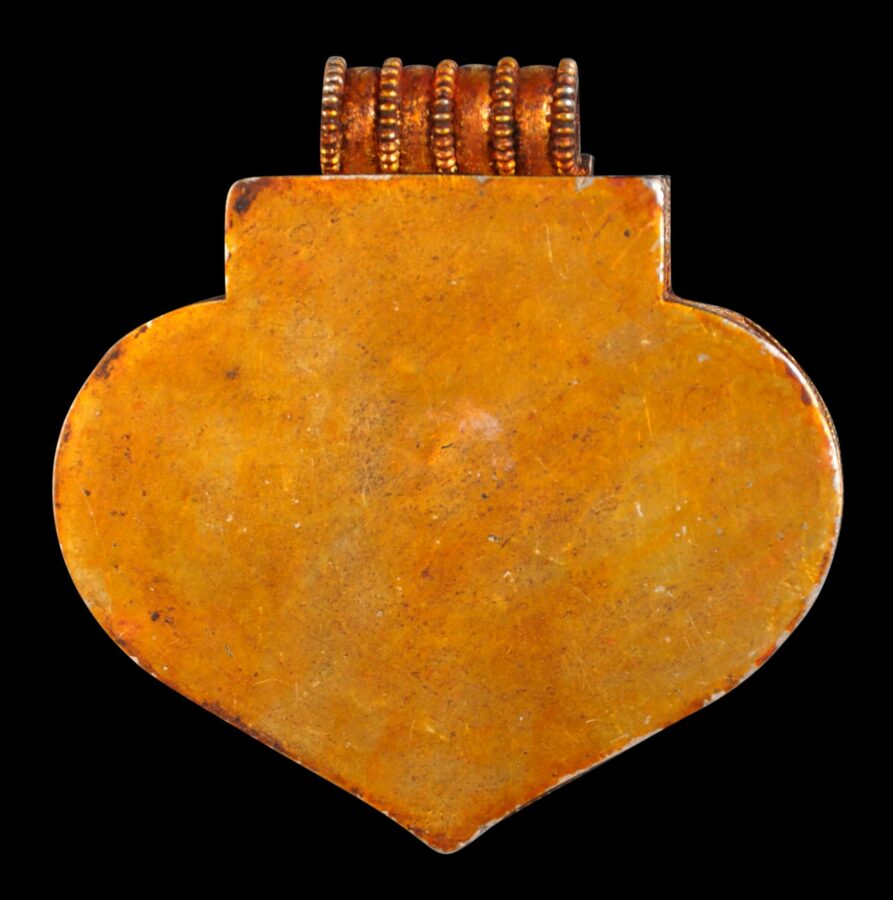This amulet box is shaped as a bodhi or pipal leaf – of the tree beneath which the Buddha attained enlightenment at Lumbini, which happens to be in present-day Nepal. It was designed to be worn from a chain around the neck, usually by royalty and other wealthy individuals.
It is made of red-stained gilded (gold plated) silver, and is utterly encrusted with faceted rubies and emeralds, carved coral and turquoise all amid gilded filigree and pearled wire work.
The hinged cover is elaborately decorated with the deity Vishnu astride his celestial mount or vahana Garuda. The bodies of both are copiously made out in carved coral. Each wears a gilded crown and other jewellery, including earrings set with rubies. They sit against a ground of gilded filigree and within a border marked out by faceted rubies and emeralds.
The cover opens to reveal an inner chamber with an elaborate figure of Tara carved from turquoise kneeling on a cushion of coral and against a ground of gilded filigree. Flowers are on either side marked out in precious stones and all within a border of alternating rubies and emeralds.
The outer sides of the box are decorated with gilded filigree work. The reverse is plain.
The cover closes tightly and is kept closed with a pin mechanism.
The top of the box has an attached tube to permit the box to be suspended from around the neck.
The dating of these types of boxes is uncertain. The combination of filigree and inlaid stones is typical of Newar (the dominant ethnic group in the Kathmandu Valley) work that dates at least to before the 18th century, and was used extensively on large plaques commissioned to adorn both public and household shines (see for example an 18th-19th century shrine plaque in Bromberg, 2013, p. 200). This box can be seen as an extension of this type of work, and is likely to have been commissioned by a wealthy Nepalese.
Some Nepalese boxes of this type are quite late, but the better quality examples (such as the example here) appear to be earlier. See for example an example sold at Bonham’s New York in 2016, which was given a 19th-20th century dating, and then there is an example in the Los Angeles County Museum of Art, which has been given a dating of 1800-1850. Other Bonhams examples are here and here.
The example here is particularly fine. It has good wear to the gilding, and is in excellent condition. The gems glitter and catch the light far more than suggested by the photographs here. It is a superb example.
References
Beer, R., The Encyclopedia of Tibetan Symbols and Motifs, Serindia, 2004.
Bromberg, A., et al., The Arts of India, Southeast Asia, and the Himalayas: At the Dallas Museum of Art, Yale University Press, 2013.
Casey Singer, J., Gold Jewelry from Tibet and Nepal, Thames & Hudson, 1996.
Clarke, J., Jewellery of Tibet and the Himalayas, V&A Publications, 2004.
Sakya, Jnan Bahadur, Short Description of Gods, Goddesses and Ritual Objects of Buddhism and Hinduism in Nepal, Handicraft Association of Nepal, 2000.


